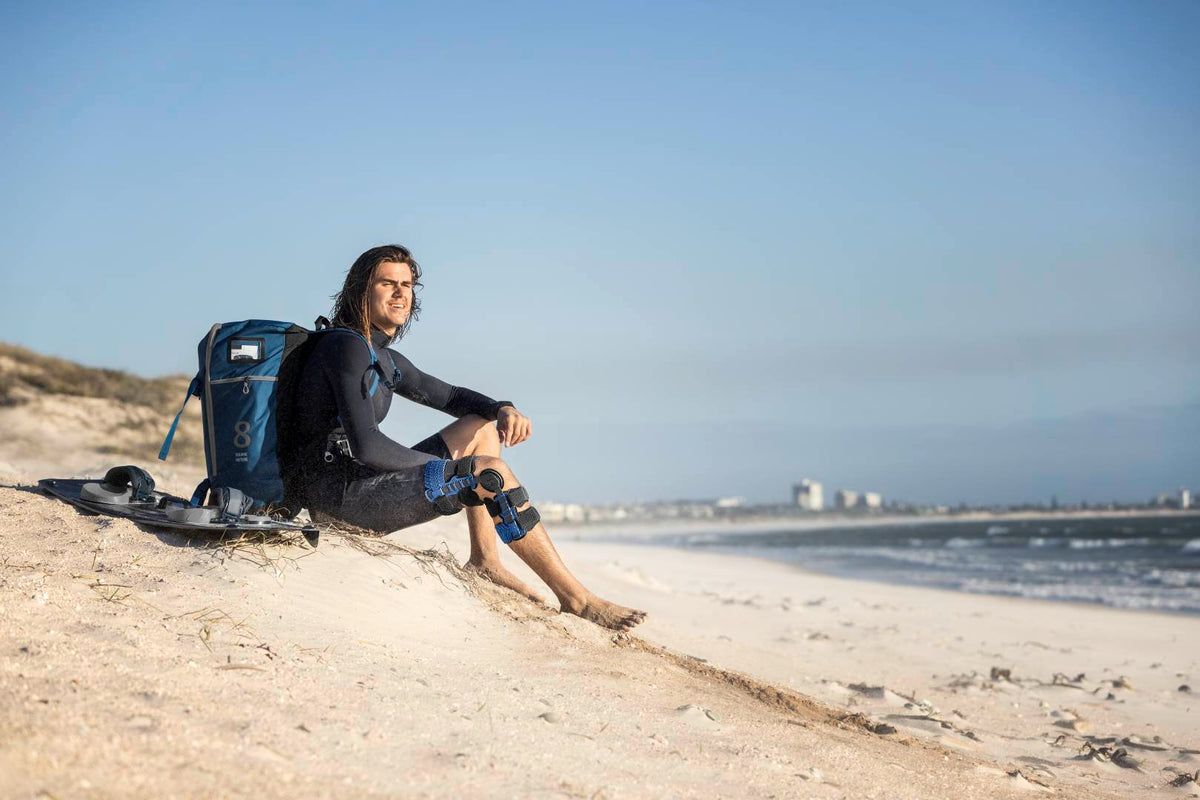Can An ACL injury Heal Without Surgery?

Anterior Cruciate ligament Injuries are very common and quite hard to heal. Surgical reconstruction has been the go-to method for piecing a partially or completely ruptured ACL together. However, due to recent advancements in research and bracing technology, it is possible for an ACL injury to heal without surgery, given the right circumstances. Let’s get into it.
Anatomy of an ACL tear
The anterior cruciate ligament connects the femur to the tibia. It is partly responsible for keeping the knee stable, absorbing shock, and preventing the thigh and shin bone from sliding too far apart. The ligament itself is made of tough, fibrous tissue. And while it’s sturdy, it can sustain damage from twisting, a bad landing after a jump, and a sharp change in direction. Ligament tears are split into three grades.
Grade 1: microscopic damage, typically an overstretch. Like an ankle sprain, a grade 1 ACL tear usually leads to pain and swelling, but it can be easily managed through RICE, physiotherapy, and a knee brace. It is highly unlikely surgical intervention will be necessary to heal the damage.
Grade 2: partial tear. 20-80% of the ligament fibres have split apart, but others are still hanging on. With a grade 2 sprain, you’ll likely experience more intense symptoms of pain and swelling, a popping sound at the time of injury, and some instability in the knee. You may also get bruising around the area and find it difficult to put pressure on the joint due to pain. Surgical intervention may be recommended depending on the extent of the damage and your overall condition, though it is not always necessary.
Grade 3: complete tear (aka rupture) of the ligament. As well as more pronounced swelling and bruising, you may be unable to stand on the leg due to extreme pain and instability. Surgical intervention is usually prescribed, but as with grade 2 tears, it isn’t always necessary.
Can a severe ACL injury heal without surgery?
The short answer is yes, though the long answer is a bit more complicated. In short, a novel bracing method - the Cross Bracing Protocol - gives you an alternative to traditional ACL reconstruction.
What is the Cross Bracing Protocol?
The CBP is a non-surgical conservative rehabilitation method for grade 2-3 ACL tears. Devised by Dr Merv Cross (an esteemed Australian Orthopaedic surgeon) and his son Dr Tom Cross, it involves:
- Wearing a hinged knee brace - chiefly, the modified SecuTec Genu - to immobilise and lock the knee at a 90-degree angle for 4 weeks. The SecuTec is the preferred CBP brace, having been customised and developed by Dr Merv and Tom over a period of 3 years to best suit patients navigating the protocol.
- Gradually increasing the locking mechanism’s range of motion as the ACL slowly heals over the following few weeks
- Doing a rehabilitation program alongside bracing and after the protocol is complete to preserve and restore the ligament’s function.
The protocol is designed on the findings that the ACL actually has a rich vascular supply and shows signs of healing like other soft tissues in the body, albeit at a slower pace. The 90-degree bend is essential as that’s the point where the distance between torn ACL tissues is the shortest, thus enabling two ends to knit together.
Why do I need to wear the SecuTec Genu?

Our technicians modified the SecuTec genu for this protocol. Among the changes is a hinge system that allows for greater control of immobilisation angles to facilitate gradual healing.
The ACL knee brace also opens at the back, letting you slide it on and off without straightening the knee, which could be detrimental to the healing process.
Additionally, with padded stays and adjustable straps, the brace will be comfortable to wear throughout the protocol. As the CBP can take 9-12 weeks (depending on the protocol selected), comfort is key to ensure you stick with the protocol.
Do note, though, that these modified SecuTecs are only available through your physio or directly through the Cross Brace protocol team. It is essential for your approved clinician to fit and adjust the brace to CBP requirements, so you’ll need to work with them closely throughout the protocol. If you’d like to pursue the CPB, start the discussion with them or reach out to us for any product-related enquiries.
Is it better to get ACL surgery?
ACL surgery is often recommended for people who are active and have severe pain and instability. In addition, the type of grade 3 rupture would also determine whether the protocol is suitable for you and diagnosed through an MRI scan. The Cross Bracing protocol is relatively new, with ongoing research and clinical trials needed to determine its benefits compared to reconstruction. However, Dr Cross and his team shared some promising preliminary results. 90% of participants with a fully ruptured ACL showed evidence of ACL healing at the 3-month MRI scan, along with improved knee function, less passive knee laxity, and a higher return to sport rate.
If you do need ACL surgery, here’s how to prepare and recover.
To sum up
An ACL injury CAN heal without surgery! The ACL has a rich vascular network and can repair, albeit slower than other soft tissues. Grade 1 sprains will have no trouble healing without surgical intervention. In some instances, grade 2 and 3 sprains may need reconstruction, but there is now an alternative for certain patients. The novel Cross Brace Protocol and the SecuTec Genu ACL knee brace help two torn ligaments stitch together again.
If you require assistance selecting the right product for your needs or wearing the brace, call us on 1300 668 466 or contact us via live chat.
Do you have private health? Most private health extras will cover Bauerfeind Products. Check to see if yours is included. Bauerfeind Private Health Insurance Inquiry.


